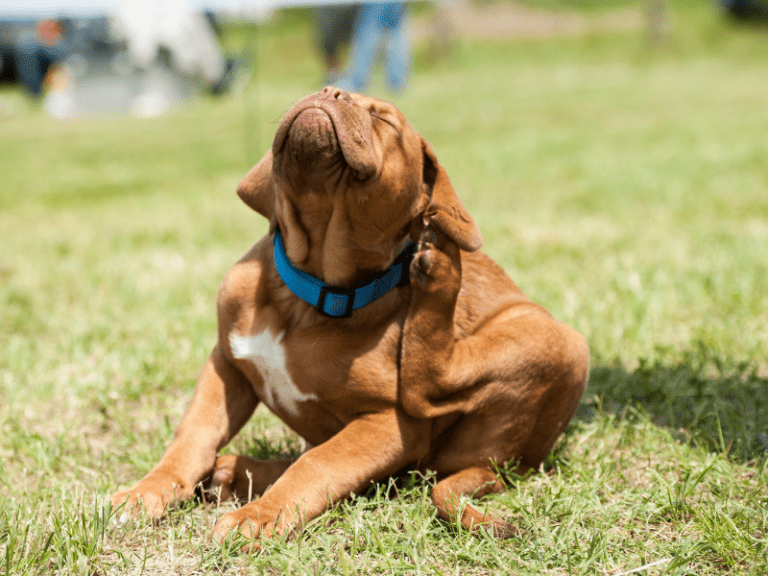What Does Your Dog’s Tail Wagging Mean
FULL DISCLOSURE: The links I share in this course ARE my affiliate links. This means I earn a commission, at no extra cost to you. In fact, sometimes you’ll get a discount or free credits just FOR using my link. 🙂
Have you ever wondered what your dog's tail wagging is trying to tell you?
If so, you're not alone. Many pet owners are curious about the meaning behind their pup's tail wagging and how it can be used to better understand their furry friend.
In this blog post, we'll take a deep dive into the fascinating world of dog tail language and the hidden secrets behind it. So, let's get started!
Introduction to Understanding Your Dog's Tail Language
Suppose you're hoping to better understand your pup's tail language. In that case, the first step is becoming familiar with the different tail positions and their meaning.
Each tail position can tell you something different about your pup's mood and intentions. By learning what each tail position means, you'll be able to better interpret your pup's behavior and respond in a way that is most beneficial for them.
Dog's Tail Language Serves Many Purposes
A dog's tail serves several important functions, from communication to balance. It is also an important part of their body language, which can be used to show us how they're feeling.
When interpreting a dog's behavior, many of us automatically assume that a wagging tail is a sign of happiness and contentment. However, as it turns out, the meaning behind a dog's tail wagging can be much more complex than we initially thought.
Different Dog Tail Positions and What They Mean

It's important to understand that a dog's tail can wag differently. A side-to-side wag is typically associated with contentment. In contrast, a high-energy, rapid wag with the tail held high can indicate excitement or even agitation. On the other hand, a slow, hesitant wag with the tail held low can indicate fear or nervousness.
Additionally, the direction in which a dog's tail is wagging can also provide insight into its emotional state. Research has shown that a dog's tail will wag more to the right when it sees something it views as friendly, while a tail wag to the left indicates a more negative or uncertain response.
Here are some of the most common tail positions and what they mean:
Wagging Tail Side-to-Side Meaning
A dog wagging its tail side-to-side is typically considered a sign of contentment and happiness. This type of wag is usually slower and more relaxed, with the tail held at a moderate height.
The dog may also have a relaxed body posture, with its ears and eyes indicating a friendly and approachable attitude.
This type of tail wagging is often seen when a dog greets its owner or is being petted and shown affection.
However, it's important to note that a wagging tail can indicate other emotions, such as excitement. Hence, observing the dog's body language and behavior is important to determine its true emotional state.
Dog Tail Tucked Between Legs Meaning
When a dog tucks its tail between its legs, it is usually a sign of fear, insecurity, or submission. This body language is often seen in dogs feeling threatened, nervous, or intimidated.
The dog may also have a lowered body posture, with its ears flat against its head and its eyes wide and alert. This behavior is the dog's way of making itself appear smaller and less threatening in the face of perceived danger.
This type of tail wagging can also be a sign of a submissive attitude towards another dog or human or a sign that the dog is feeling guilty or ashamed.
It's important to pay attention to other cues in the dog's behavior, such as whining or cowering, to better understand what the dog is feeling.
Dog Tail Up In the Air Meaning

A dog holding its tail up high in the air is usually a sign of confidence, excitement, or alertness. This type of tail position is often seen in dogs that are feeling playful, curious, or ready for action.
The dog may also have a straight, upright body posture with its ears perked up and its eyes focused on its surroundings. This behavior is the dog's way of showing that it is ready for whatever comes next and is also a sign of dominance. They're trying to appear taller and more dominant.
It can also be seen when the dog is greeting its owner or being praised or rewarded. It's important to pay attention to the dog's overall body language, such as its energy level, to better understand what the dog is feeling.
Dog Tail Circling Meaning
When a dog's tail is circling, it usually indicates a state of excitement or agitation. This type of tail movement is often seen in dogs that are feeling playful, energetic, or anxious.
The dog may also have a high energy level, with its body posture reflecting that. This behavior is the dog's way of expressing excitement or eagerness, which could also be a sign that a dog is seeking attention or wants to play.
However, It's also important to note that this type of tail movement can also indicate a medical condition such as flea allergy dermatitis, an allergic reaction to flea bites. This can cause a dog to bite and scratch its tail, causing it to circle.
Therefore, it is important to pay attention to the dog's overall body language and behavior to better understand what the dog is feeling and if any medical attention is needed.
Dog Tail Thumping Meaning
When a dog thumps its tail, it usually indicates a state of excitement or anticipation. This type of tail movement is often seen in happy, eager, or expectant dogs. The dog may be wagging its tail rapidly against the ground or a surface, creating a thumping sound.
This behavior is the dog's way of expressing its excitement and enthusiasm. It could also signify that a dog is seeking attention, showing affection, or wanting to play.
Dog Tail Twitching Meaning
A dog's tail twitching can have a variety of meanings, depending on the context and the dog's body language. For example, a dog's tail may twitch when they are excited or happy. It can also be a sign of anxiety or discomfort.
It's important to observe a dog's body language as a whole, as well as their tail twitching, to determine their emotional state. In some cases, twitching can signify a medical condition, such as a neurological disorder or injury.
It's best to consult a veterinarian if you have concerns about your dog's tail twitching.
Conclusion
Tail wagging is a fascinating way to understand your pup's feelings and intentions. By becoming familiar with the different tail positions and what they mean, you'll be able to better interpret your pup's behavior and respond in a way that is most beneficial for them.
So, the next time you're wondering what your pup is trying to tell you, take a look at their tail!







